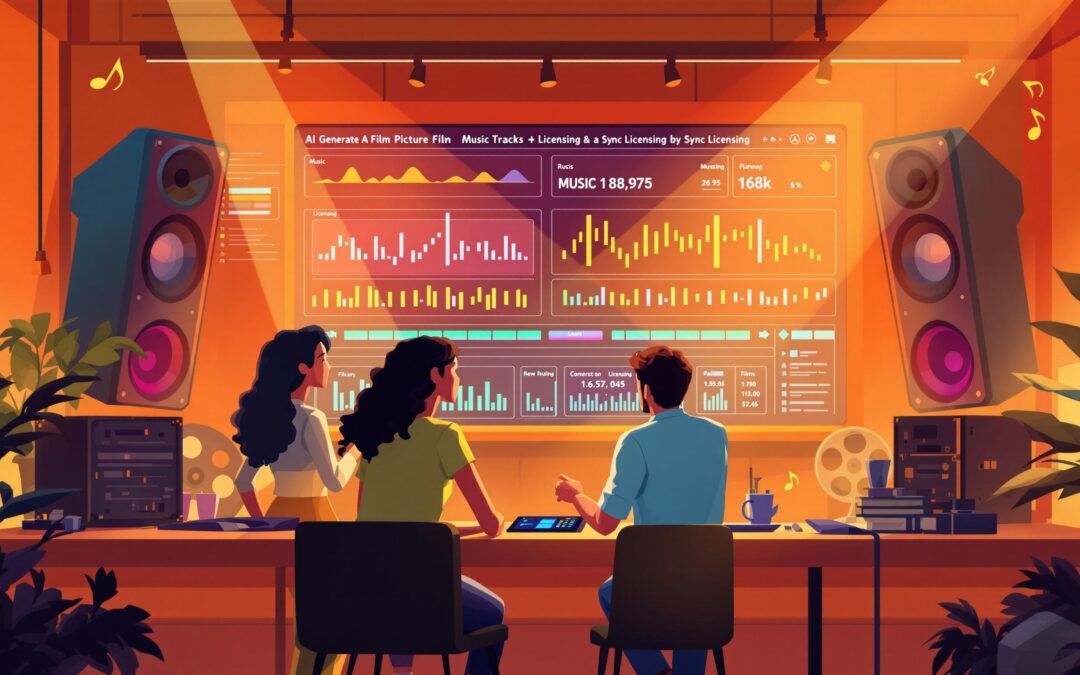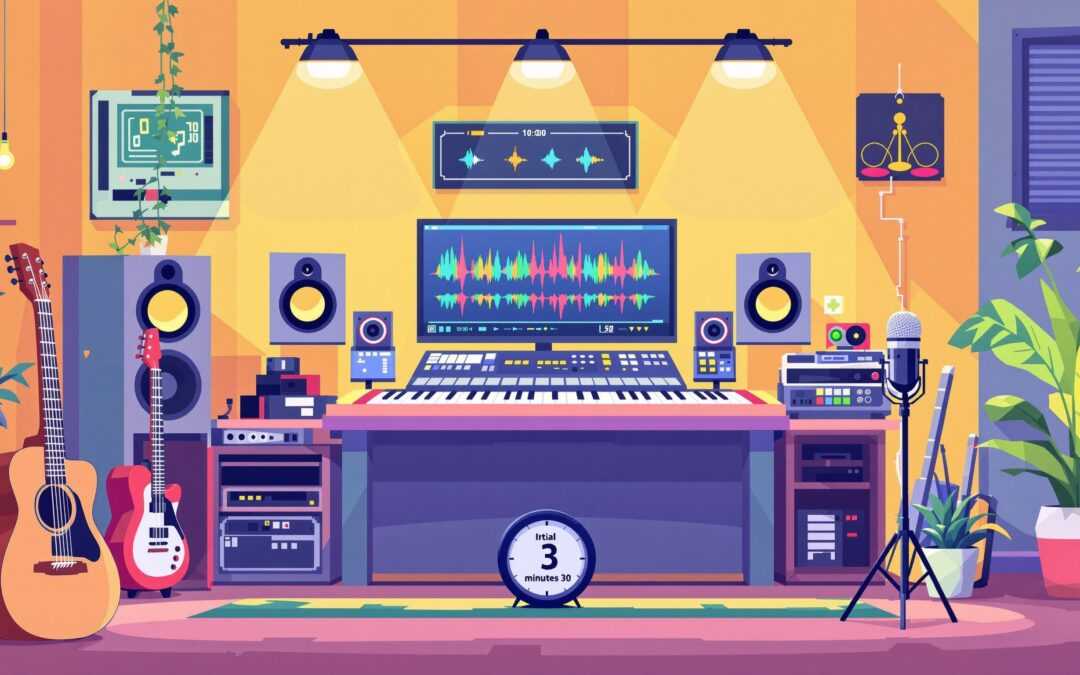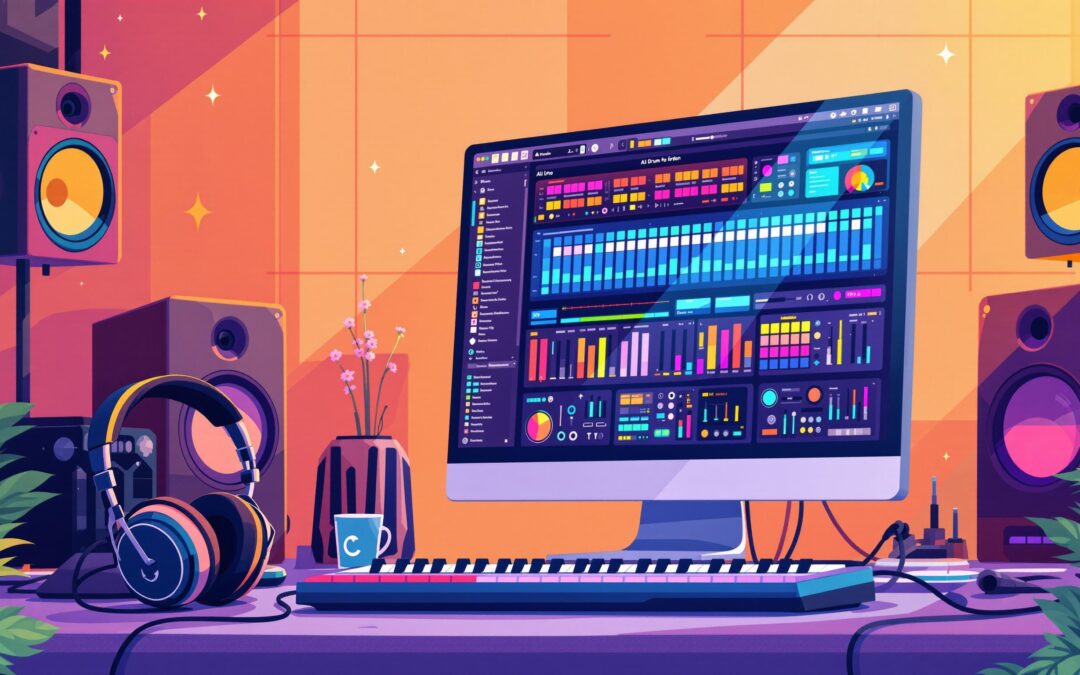Want to write better songs as a team? Start by defining clear roles. Successful co-writing depends on dividing responsibilities so everyone can focus on their strengths. Here’s a quick breakdown of the key roles in songwriting:
- Lyricist: Crafts the words, message, and story of the song.
- Composer: Creates the melody, chords, and overall structure.
- Producer: Shapes the arrangement, provides feedback, and oversees recording.
Why it matters:
Clear roles prevent confusion, speed up decision-making, and foster collaboration. By assigning tasks based on strengths, you can create better music together while avoiding conflicts.
How to get started:
- Identify team strengths and assign roles.
- Set SMART goals (Specific, Measurable, Achievable, Relevant, Time-bound).
- Stay open to ideas and let creativity flow across roles.
When everyone knows their part but stays flexible, the songwriting process becomes smoother and more productive. Keep reading for detailed tips on how lyricists, composers, and producers work together.
What Lyricists Do
Writing Lyrics and Stories
Lyricists are the storytellers behind a song, crafting words that resonate with listeners. Their role involves:
- Writing verses that tell a compelling story
- Creating hooks and bridges to keep the song engaging
- Ensuring every line aligns with the song’s core message
- Balancing artistic creativity with clear, relatable communication
Keeping Lyrics Consistent
Consistency is key to making a song impactful. Lyricists focus on ensuring every word supports the song’s theme and style. This includes:
- Defining a clear theme before starting
- Using imagery and metaphors that complement the theme
- Sticking to a consistent narrative perspective (like first or third person)
- Keeping the emotional tone steady throughout the song
Working with Melody
Although composers handle the music, lyricists ensure the words flow naturally with the melody. This involves:
- Aligning syllables with the melody’s rhythm
- Highlighting words that match the musical accents
- Tweaking word choices to fit rhythmic patterns
- Writing phrases that feel natural within the musical structure
Lyricists and composers often work closely to refine lyrics so they fit seamlessly with the melody, creating a cohesive and polished song.
What Composers Do
Making Melodies and Chords
Composers create the music that gives lyrics their emotional depth. Their main tasks include:
- Crafting melodies that evoke feelings
- Developing chord progressions to complement the melody
- Designing instrumental hooks and recurring musical themes
- Choosing the key and tempo
- Adding melodic variations for verses, choruses, and bridges
When shaping melodies, composers aim to make them memorable and easy to sing. They consider factors like vocal range, breathing spots, and natural speech flow to ensure performers can deliver the melody comfortably.
Building Song Structure
Composers arrange the musical components into a well-organized framework that enhances the song’s effectiveness. This process involves:
- Outlining sections of the song with clear lengths and smooth transitions
- Planning instrumental breaks or solos
- Defining rhythmic patterns and grooves
- Creating climactic moments and resolving points
Each section of the song must contribute to the overall experience. Composers focus on keeping the listener engaged while guiding the emotional journey of the piece. Once the structure is in place, they refine how the music complements the lyrics.
Working with Lyrics
After setting the structure, composers align the music with the lyrics to amplify their impact. While lyricists write the words, composers shape the music to match the tone and message. This collaboration involves:
- Adjusting melodic phrasing to highlight important lyrics
- Matching the musical mood to the lyrical content
- Leaving space for key words to stand out
- Syncing rhythms with natural speech patterns
- Adding dynamic shifts that enhance the narrative
Composers often work side by side with lyricists to fine-tune both elements, ensuring the music and lyrics blend seamlessly. They may tweak the melody to emphasize the strongest parts of the lyrics, always focusing on how the music enhances the story.
What Producers Do
Managing Song Arrangement
Producers turn the ideas of lyricists and composers into a polished, finished track. Their role in arranging a song involves tasks like:
- Choosing the right instruments and sounds
- Shaping the sound and texture of each section
- Balancing elements to create contrasts that enhance the song’s emotional flow
- Adding effects and transitions to elevate the production
They carefully juggle simplicity and complexity, making decisions that amplify the emotional impact of the music. This could mean stripping things back for clarity or layering sounds to create a fuller experience.
Giving Song Feedback
Producers act as the objective voice in the creative process, offering feedback to refine the song. Their input often includes:
- Suggesting tweaks to melodies or chord progressions
- Highlighting areas where lyrics could be improved
- Recommending changes to the song structure for better flow
- Identifying performance issues that need attention
- Ensuring the song strikes a balance between artistic vision and commercial appeal
Producers need to deliver feedback in a way that motivates rather than discourages. They aim to keep the creative energy alive while pushing for the best possible results. This feedback naturally carries over into the recording process, where ideas are brought to life.
Running Recording Sessions
When it’s time to record, producers take the lead on both the technical and creative fronts. Their responsibilities during recording sessions include:
- Organizing the recording schedule and timeline
- Choosing the right equipment and recording spaces
- Directing performers to capture their best takes
- Supervising the mixing process to achieve the desired sound
- Overseeing the final mastering to complete the track
Producers aim to create a comfortable atmosphere for artists while keeping the process on track. They work closely with engineers, session musicians, and other team members to ensure everything runs smoothly.
In today’s music world, producers often manage remote collaborations. This involves handling file sharing, tracking versions, and ensuring everyone stays connected and productive, no matter where they are.
sbb-itb-1c6af30
How to Divide Roles Effectively
Identifying Team Strengths
Understanding what each team member does best can make your co-writing sessions more productive. Talk about everyone’s experience and what they feel comfortable working on. Instead of looking at general musical talent, focus on specific skills like writing melodies, crafting lyrics, or arranging music.
A quick skills assessment can help pinpoint individual strengths. For instance, someone with a knack for storytelling could handle lyrics, while someone with a strong grasp of music theory might work on chord progressions.
Pairing team members with complementary skills ensures all aspects of songwriting are covered. This approach often leads to stronger and more well-rounded results.
Setting Clear Goals
Turning your songwriting ideas into actionable steps is easier with clear goals. Using SMART goals can help the team stay on track and focused.
Here’s how to apply SMART goals to your co-writing process:
- Specific: Define clear objectives (e.g., finish the chorus and verse lyrics during the session).
- Measurable: Set milestones (e.g., create melodies for two verses in two hours).
- Achievable: Make sure your goals are realistic for your team’s abilities.
- Relevant: Align goals with the overall vision for the song.
- Time-bound: Assign deadlines for each task.
Write down these goals at the start of your session and revisit them as needed. Clear goals keep everyone aligned while allowing room for creative input.
Staying Open to Ideas
While assigning roles is important, staying flexible ensures you don’t miss out on great ideas. Create an environment where everyone feels comfortable sharing feedback and suggestions.
Here are some ways to encourage input:
- Use “yes, and” responses to build on ideas rather than dismissing them.
- Keep feedback focused on the song’s objectives, not personal preferences.
- Take note of all suggestions for future reference.
- Be open to shifting roles if someone shows unexpected talent in a certain area.
Roles should guide the process, not limit it. If someone steps outside their assigned role with a fantastic idea, embrace it. Whether it’s a composer suggesting lyrics or a lyricist coming up with a chord progression, the ultimate goal is to create the best song possible – no matter where the ideas come from.
Songwriting Collaboration Dos and Don’ts
Conclusion: Main Points
Co-writing works best when roles are clearly defined, and teamwork is prioritized. Assign tasks based on each member’s strengths to boost productivity and encourage creativity. Here’s a quick recap of what makes co-writing successful.
A good collaboration strikes a balance between structure and flexibility. Clear roles provide direction, but being open to new ideas can spark unexpected solutions. Setting SMART goals ensures everyone stays focused and accountable.
The key to effective co-writing is playing to the team’s strengths. When each person excels in their role while staying open to input, the process runs smoothly and results in a polished final product.
The three essentials for successful co-writing are:
- Clearly defined roles that align with individual strengths
- Structured goals to keep the team on track
- Open communication that encourages creativity and idea-sharing











